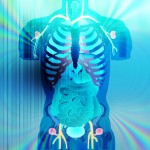 When peoples of ancient cultures wanted to cure disease, relieve pain or reach out to the divine, they turned to the plants growing around them. The bark of trees, pollen from flowers or sap from stems could, at times, deliver just the kind of sensation they were looking for, and if so, the next generation might know just what to look for when a similar situation arose.
When peoples of ancient cultures wanted to cure disease, relieve pain or reach out to the divine, they turned to the plants growing around them. The bark of trees, pollen from flowers or sap from stems could, at times, deliver just the kind of sensation they were looking for, and if so, the next generation might know just what to look for when a similar situation arose.
It’s likely that marijuana was discovered in much the same fashion, as this drug originates with the leaves, stems and flowers of a common plant. Just because the drug comes from a natural source doesn’t make it safe for use, however, as people who use this drug are sometimes exposed to very serious, and very complicated, forms of addiction that can be difficult to cure.
Understanding Marijuana Use
It’s hard to tell the real story of marijuana use, abuse and addiction, as there is a significant amount of misinformation that pervades popular culture. It’s possible that the legalization movement has caused some of that confusion.
The laws, as they were written, weren’t designed to provide marijuana to everyone who wanted to use the drug on a recreational basis. Instead, the laws were designed to provide the drug to people who had long-term diseases that caused a specific set of symptoms that couldn’t be ameliorated by standardized drugs. In a way, the laws were designed to regulate marijuana in much the same way that prescription drugs are regulated.
Even so, many people who live in California and other states don’t take marijuana in order to assist with a chronic, long-term problem. Instead, these people take the drug in order to experience euphoria, transcendence and relaxation. For these recreational users, the drug is simply fun.
California was the first state to legalize marijuana for medical purposes, and according to the California Department of Public Health, the medical use laws were designed to supply the drugs to people who had serious health problems, such as:
- Arthritis
- Anorexia
- Cancer
- Glaucoma
- Migraine
- Seizures
- Nausea
Recreation and Damage

Marijuana, or “weed,” “Mary Jane” or “herb,” is considered a hallucinogenic drug. Users typically smoke or eat the leafy product they buy from dealers, and when they do, the substance attaches to specific receptors in the brain and digestive system and brings about a change in perception and physical sensation. The changes can stay in place for hours.
At one point, users believed that marijuana wasn’t addictive, as it didn’t seem to cause a physical sensation of pain when users attempted to stop using the drug. Now, research suggests that the safety of marijuana has been overstated. For example, research cited by the National Institute on Drug Abuse suggests that people who attempt to stop using marijuana experience psychological distress manifesting as irritability, anxiety and insomnia.
They may also experience a deep craving for drugs. In addition, marijuana users have been known to escalate their use, taking more and more of the drug each day, in a pattern similar to those seen in people who take heroin or another notorious form of drugs. These two elements, when put together, do seem to suggest that marijuana is an addictive drug.
Consequences of Addiction
People who use marijuana on a regular basis, and who develop symptoms of addiction due to their habits, face a serious array of problems due to their decisions. For example, researchers have found a very significant link between the use of marijuana and the development of schizophrenia. In one such study, published in BMJ, researchers found that the development of schizophrenia had a “dose-dependent” relationship with marijuana, meaning that the more of the drug people used, the more likely they were to develop the mental illness.
It’s not clear why the drug has the capacity to cause this kind of persistent mental illness, and it’s possible that some people might use the drug regularly and never develop a problem. But at the moment, it’s safe to say that people who have a family history of schizophrenia should steer clear of marijuana. The drug could be just too dangerous for them.
Related Content
- What It Does to the Body
- Is It Possible to Have Withdrawals
- Can You Overdose
- Teens and Marijuana Use
- Addiction Statistics
- How Marijuana Makes it to Market
Similarly, studies such as this one from the journal Criminal Behaviour and Mental Health, have found a link between marijuana use and the propensity to commit violent acts. Specifically, researchers found that the number of violent acts committed by people who used marijuana was similar to the number of violent acts perpetrated by people who had schizophrenia that wasn’t well controlled. This is certainly a dangerous drug that could quickly turn on someone who chooses to use it.
Seeing the Signs
Those who don’t talk openly about their drug use might still leave marijuana paraphernalia behind, such as:
- Tiny clips
- Glass pipes filled with water
- Lighters
- Cigarette papers
- Metal or wooden pipes
Some people who abuse marijuana seem proud of their choices, and they quickly begin to advocate for widespread use of the drug. They may talk at length about how the drug makes them feel, and they may invest in clothing, posters, music and artwork that glorify the use of this specific substance. Signs like this are hard to ignore, and they could prompt a frank discussion about use and abuse of this drug.
They may also buy the drug in bulk, and store the excess in close proximity to the equipment they plan to use. Marijuana tends to look like tiny particles of oregano, but it has a pungent, slightly rancid, smell that can quickly differentiate it from a cooking herb.
Finding evidence of drug use like this can be frightening, and it’s not uncommon for family members to feel upset and even a little angry when they discover that someone in their midst is using drugs. However, spotting the signs of abuse gives the family the opportunity to take action, and that’s when healing begins.
In a formal treatment program for marijuana addiction, such as the program we provide at Axis, people can learn more about how marijuana works inside the cells of the brain. This kind of education may counteract the decades of misinformation marijuana addicts have been exposed to, and armed with this knowledge, people might be willing to do the hard work that can bring about a real recovery. With counseling, support group work, medical supervision and more, we can help the person you love to find a better way to live that doesn’t include marijuana. Please call us to find out more about our treatment program. We can even schedule an intake appointment for you over the phone.
Have Questions?
Have Questions?
Call 8667373570
Speak with our admissions counselor






